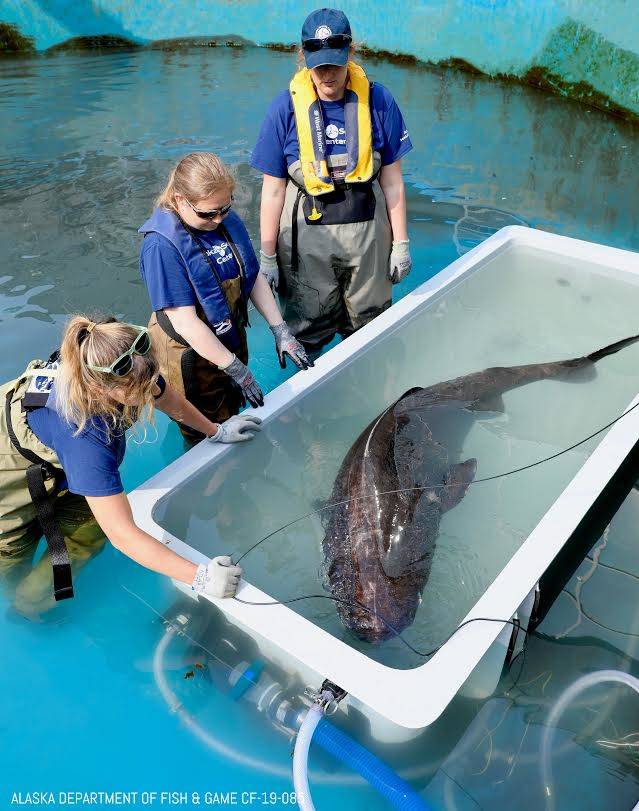A male Pacific sleeper shark was captured by researchers at the Alaska SeaLife Center for an investigative study on the species, the center wrote in a press release. The shark is a close relative of the Greenland shark, which can live hundreds of years, the release said.
“If findings from recent studies on the Greenland shark transfer to Pacific sleepers, these animals could maybe reach an astonishing age of 200-300 years old,” Dr. Amy Bishop, a scientist at the center, said in the release.
The team hopes to investigate the ecological importance of these sharks, how their populations are impacted through fishing activities and their predation habits.
The center’s senior researcher, Dr. Markus Horning, is leading the study as the principal investigator, along with Bishop, Robert Hocking and Jared Guthridge. The team is also working with Dr. Christopher Lowe, a shark expert from California State University at Long Beach.
The Pacific sleeper shark is a large marine predator prevalent in Alaska waters, and the release says evidence from initial tagging work by the center’s researchers suggests they may be a key predator of juvenile Steller sea lions.
The release says researchers first began fishing for sharks in 2018, first looking for sharks under 6 feet.
“The goal is to bring up to five young, small sharks to the Center for short periods of time for select studies on their metabolic rates and basic biology,” the release said. “They will then be released back in Resurrection Bay with telemetry tags to monitor their movements. After receiving assurance from local fishing captain, Andy Mezirow, that sleeper sharks could be found right in the Bay, they started pulling a team together to fish regularly.”
To find the shark, the scientists used bait stations placed up to 900 feet down.
Visitors to the center may be able to see the research in action, as the sharks are staying in the largest pool, which is visible from the second floor of the research institute, the release said.
Funding for the project was provided by the North Pacific Research Board. The project is also permitted by the center’s institutional ethics committee and by the Alaska Department of Fish and Game.

